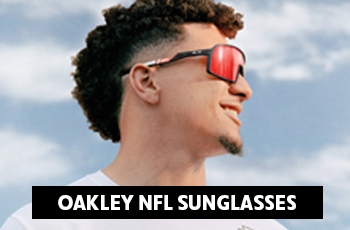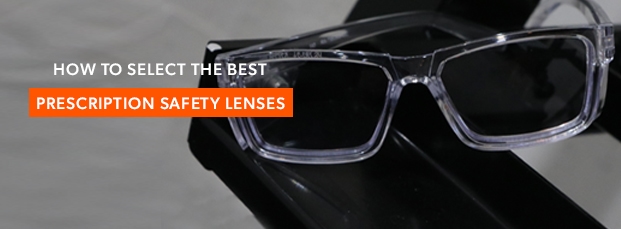At RX-Safety, we provide a wide range of prescription safety glasses for all markets, including construction, healthcare, manufacturing, research labs, the military, and more. If you work in any environment requiring safety glasses, RX-Safety has you covered!
Find the Best ANSI-Approved Prescription Safety Glasses for Your Needs.
Our vast selection of ANSI-approved safety frames, including wrap-around styles, goggles, trendy plastic frames, classic metal frames, rimless options, and more, ensures that you find the best fit for your protective needs.
All our Prescription safety glasses and Lenses meet and are approved to the ANSI standard for safety ANSI Z87.1 or Z87+ High Impact ratings. Which guarantees you are shopping for the best safety glasses to fit your needs.
Safety Glasses Made in the USA: Precision and Quality You Can Trust
Proudly made in the USA, our safety glasses are designed and manufactured in-house using state-of-the-art CNC and robotic machines. This advanced technology ensures unparalleled precision, quality, and consistency in every pair we produce.
Our glasses meet rigorous ANSI standards for impact resistance, optical clarity, and durability and include military-rated options for ballistic protection. Crafted to withstand hazardous conditions and built to last, our USA-made safety glasses provide superior protection and style backed by cutting-edge American manufacturing.
How to Purchase Prescription Safety Glasses at RX-Safety
Purchasing safety glasses at RX-Safety is a seamless experience. We provide prescription safety glasses at affordable prices for your single vision, Flat Top Bifocal, or Progressive No Line Bifocals. With a focus on quality, our lenses—available in materials like Trivex, Polycarbonate, and High Index—promise optical perfection. Here’s how you can personalize your safety lenses:
-
Choose Your Frame:
Browse through our selection of frames, filtering by style, features, and safety ratings. We offer a diverse range of colors and designs to match your preferences.
-
Select Your Lens Type:
First, choose your lens type. Choose from single vision, digital single vision, lined bifocals, progressive no line bifocals, or progressive bifocal prescription. Next, choose your material. Select from trivex polycarbonate or high index. Finally, choose your lens color. Finally, choose from clear to polarized sun lenses to specialty tints like yellow or orange to all the different types of transition lenses like Xtractive Polarized Lenses
-
Enter Your Prescription:
Use our easy online tool to input your prescription details. If you have any questions or need assistance, our dedicated team is here to help every step of the way.
Accessories to Enhance Your Prescription Safety Glasses for Maximum Versatility
To enhance convenience and versatility, we also offer a variety of accessories for our safety glasses, like removable foam inserts, adjustable straps, and replacement removable side shields, which will make our safety glasses extremely convenient for transitioning your frames from everyday life to hazardous environments.
Explore Our Comprehensive Line of Prescription Safety Glasses for Unmatched Protection and Quality
Check out our comprehensive line of prescription safety glasses and discover the unmatched protection and quality we offer. If you have any questions about the high-quality protective glasses, safety lenses, or additional safety accessories, don’t hesitate to contact us.
Your safety and satisfaction are our mission. Shop with confidence at RX-Safety for all your prescription safety glasses needs.
AVAILABLE FEATURES FOR YOUR PRESCRIPTION SAFETY GLASSES
ANTI-FOG COATING FOR YOUR PRESCRIPTION SAFETY GLASSES
Stop your safety glasses from fogging permanently.
The Permanent Anti Fog Coating was created by Rx-Safety Engineers to stop your prescription safety glasses from fogging up.
The coating works on a molecular level to keep water molecules from bunching together, causing the blinding fog that is so Annoying and dangerous on safety glasses.
The result is a coating that NEVER fogs, even in the coldest conditions or a hot, humid climate. The lenses may develop a few water droplets instead of fog, but the water is transparent and not dangerous.
KEEPING YOUR PRESCRIPTION SAFETY GLASSES CLEAN
Properly cleaning your prescription safety glasses is essential.
This will maintain the life of your safety glasses.
As a worker in any segment, your prescription safety glasses may get dirty in various ways. Most glasses wearers know to use a microfiber cloth and a gentle glasses cleaning solution.
Whether it is chemicals, dust, debris, or hazardous medical material, you can learn how to clean your glasses safely. In this post, we discuss various ways to clean your prescription safety glasses that will not cause damage to the frames or lenses.
The first step in prolonging the life of your prescription safety glasses is monitoring them for dirtiness and damage. Dirty glasses can impact your vision and cause accidents. Spot-check your lenses every day to ensure they have not become too dirty.
KEEP YOUR SAFETY GLASSES CLEAN
1. ALWAYS CARRY A MICROFIBER CLOTH
The microfiber cloth will be gentle on your glasses and will prevent them from getting scratched.
2. HAVE A CLEANING SOLUTION
The cleaning solution is to clean and disinfect your prescription safety glasses, wiping away dirt and debris.
THE BEST WAY TO DEEP CLEAN YOUR PRESCRIPTION SAFETY GLASSES
To clean your safety glasses, start by rinsing them under lukewarm water to remove any particles. Apply a small amount of dish detergent to the lenses and frames, then gently wash them with your hands. Rinse off all the soap thoroughly with lukewarm water. Finally, pat the lenses and frames dry with a paper towel or a clean cloth rag. If you notice any watermarks or soap residue, use your microfiber cleaning cloth and lens cleaning spray to achieve a clean finish.
MOST POPULAR PRESCRIPTION SAFETY GLASSES UNDER $60.00
Blog
PRESCRIPTION SAFETY GLASSES














































































